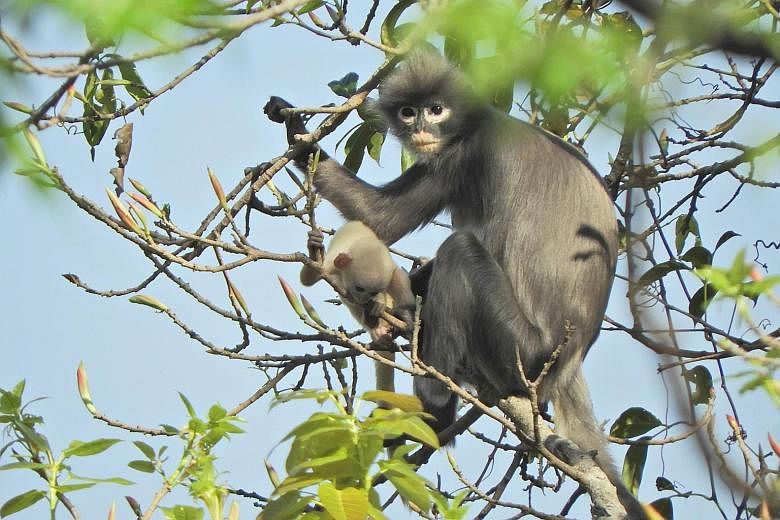PARIS • Scientists have identified a new species of primate living in the forests of central Myanmar, a lithe tree-dweller with a mask-like face framed by a shock of unruly grey hair.
The Popa langur - named after an extinct volcano home to its largest population, some 100 individuals - has been around for at least a million years, according to a study detailing the find, published yesterday in Zoological Research.
But with only 200 to 250 left in the wild, experts will recommend that the leaf-eating species be classified as "critically endangered".
"Just described, the Popa langur is already facing extinction," said senior author Frank Momberg, a researcher at Fauna and Flora International, in Yangon.
Throughout its range, the monkey with startling chalk-white rings around its eyes is threatened by "hunting, habitat loss, degradation, fragmentation caused by agricultural encroachment, and illegal or unsustainable timber extraction", the study found.
The first evidence of the new species did not come from the wild, but the backrooms of the London Natural History Museum, where genetic analysis revealed that specimens gathered more than a century ago, when Burma was a British colony, were something new.
Samples of Popa poop collected by Mr Momberg and his colleagues in the forest matched those from the museum and showed that the previously unknown langur was still roaming the wild.
The reclusive monkeys were finally captured on film in 2018, revealing their distinctive fur colouration and markings.
Trachypithecus popa, or T. popa for short, has a grey-brownish and white belly, with black hands and wrists that look a bit like gloves.
Its agile tail - at nearly a metre long - is longer than its body, with the creature weighing about 8kg.
"Additional field surveys and protection measures are urgently required and will be conducted by Fauna and Flora International and others to save the langurs from extinction," said Mr Ngwe Lwin, a primatologist with the organisation's Myanmar programme.
Scientists at the German Primate Centre in Goettingen, Germany, co-led the research.
There are more than 20 species of langur in the world, several of them critically endangered.
The best known among them is the grey or Hanuman langur, named after the wandering monkey god prominent in the Hindu epic Ramayana.
In the new study, an international team of more than 30 researchers also decoded the evolutionary history of the broader group, or genus, that included langurs by sequencing the mitochondrial genomes of 41 specimens.
There are more than 20 critically endangered species of primate in the world today.
AGENCE FRANCE-PRESSE

